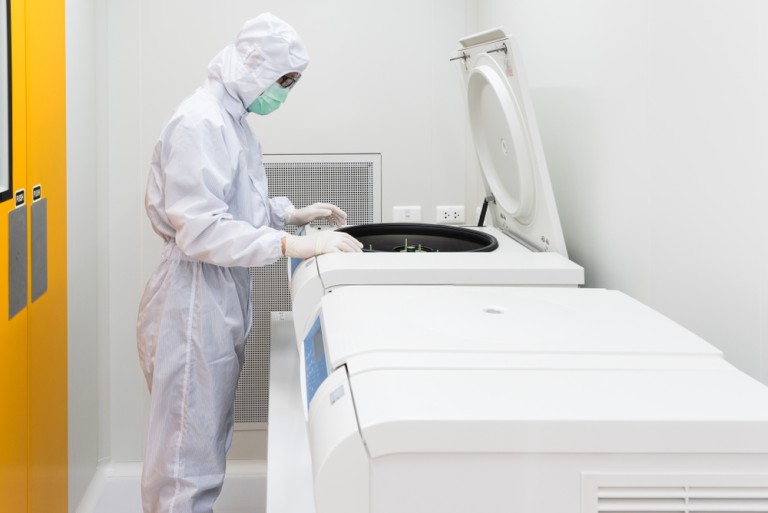
Air exchange rate is a key term to understand in cleanroom construction, management, and maintenance. The air exchange rate for a cleanroom is defined as the number of changeovers of air within the cleanroom over a specific amount of time, such as cleanroom air exchanges per minute or cleanroom air exchanges per hour.
Maintaining the correct, consistent air change rate in cleanroom settings is critical to the safe, reliable operation of the cleanroom. There are a number of concerns at stake in maintaining the exchange rate, including:
- Personnel safety: Air exchanges are intended to keep air moving in the cleanroom in such a way as to prevent particles, gasses, or other contaminants from building up in the room or settling on surfaces. When working with and handling potentially hazardous materials, for example, the proper air exchange setup will reduce potential contaminants from settling on PPE or other facility equipment, helping to control the risk of those contaminants exiting the cleanroom and exposing personnel.
- Personnel comfort: Air exchange also helps to maintain a comfortable environment conducive to safe, efficient working habits — a key element in the success of the cleanroom.
- Testing quality: Air change rates help to keep contaminants and other particles from settling on testing samples, tools, and other equipment, helping to maintain the quality and integrity of testing and validation processes.
- Product quality: In cleanrooms where products are manufactured or handled, such as medical devices or food manufacturing equipment, it is critical to maintain the correct exchange rate to protect the quality of the product at hand, keeping end users and others who are exposed to the equipment safe.
Determining the Recommended Air Exchange Rate (RAER) for Your Facility
There are several considerations at hand in determining the correct RAER for your facility. The main factors to understand include:
- Intended ISO class
- Room dilution rate
- Particle, contaminant, gas, or heat load of the process to be carried out
- Number of personnel working inside at any given time
- PPE or gowning to be used
The primary equation for calculating the exchange rate in unidirectional airflow environments is:
Air changes per hour (ACH) = air speed in CFM * 60 minutes / room volume
With this equation at your disposal, you can determine whether your air circulation setup is sufficient to meet ISO standards (typically ISO 5 through ISO 8) and the needs of your cleanroom application. Air changes per hour — and, depending on ISO requirement, per minute — should be regularly tested and recorded in order to determine trends and maintain ongoing validation of cleanroom safety and viability during testing. While not appropriate for all rooms or processes, the following are normal suggestions for air changes per hour based on ISO class:
- ISO 8 at least 20 air changes
- ISO 7 at least 50 air changes
- ISO 6 between 150 and 240 air changes
- ISO 5 between 240 and 480 air changes
Technical Safety Services is a cleanroom testing and certification leader with extensive expertise in services for controlled environments, including laboratories, cleanrooms, and research facilities. We focus on testing to help optimize both personnel safety and testing integrity, including a number of RAER-related services to help you confirm that you are achieving the proper exchange and ventilation rates to remain in compliance. To learn more, contact us today.

